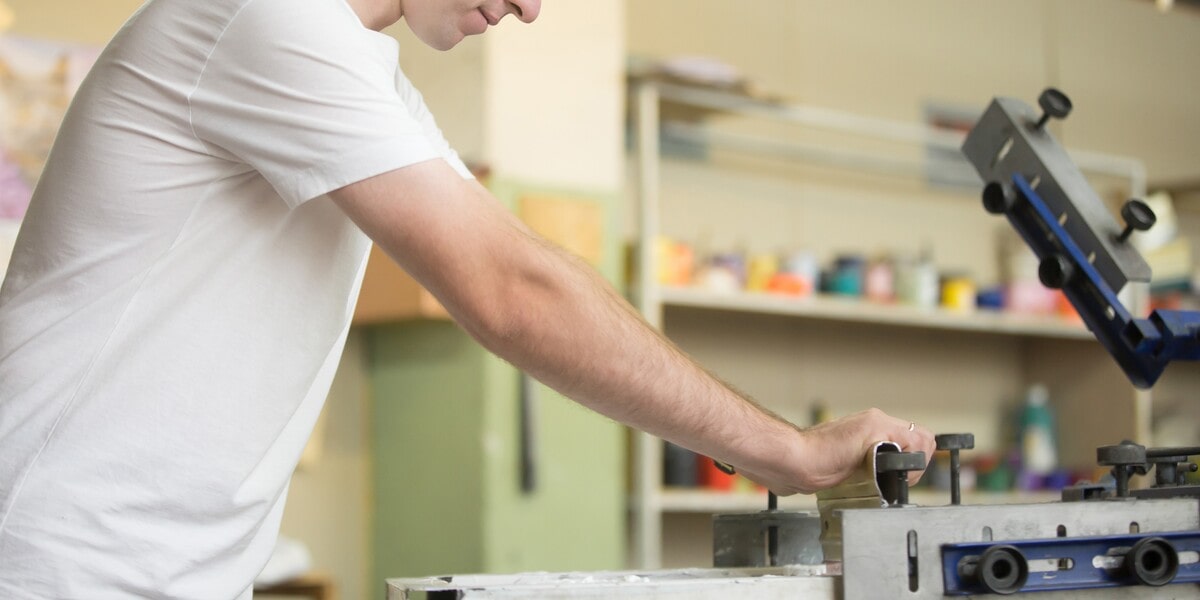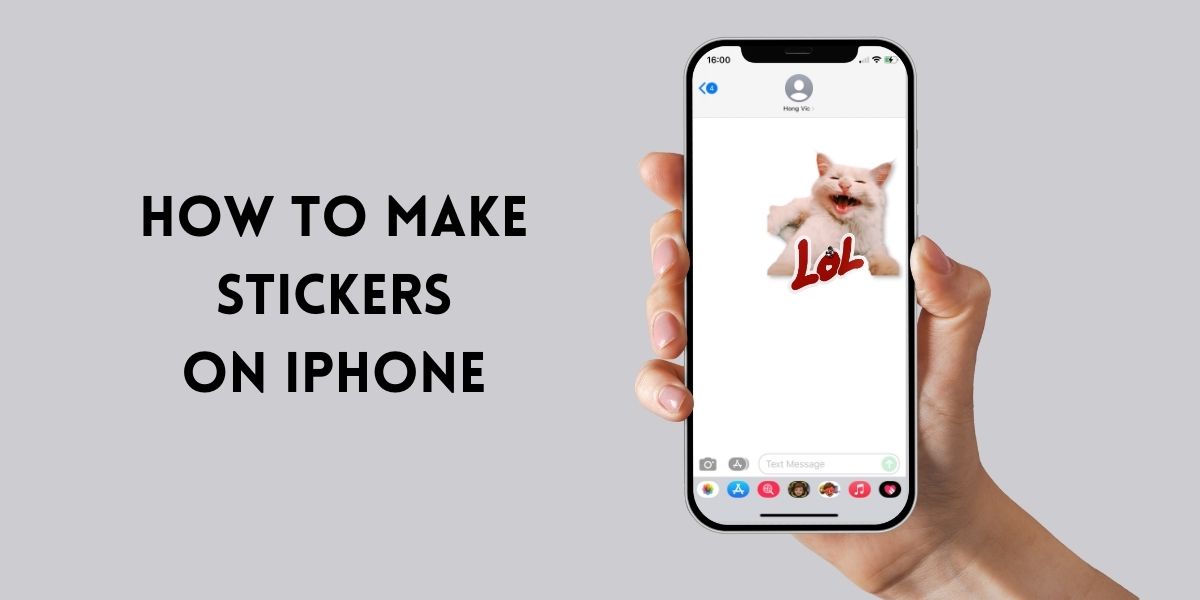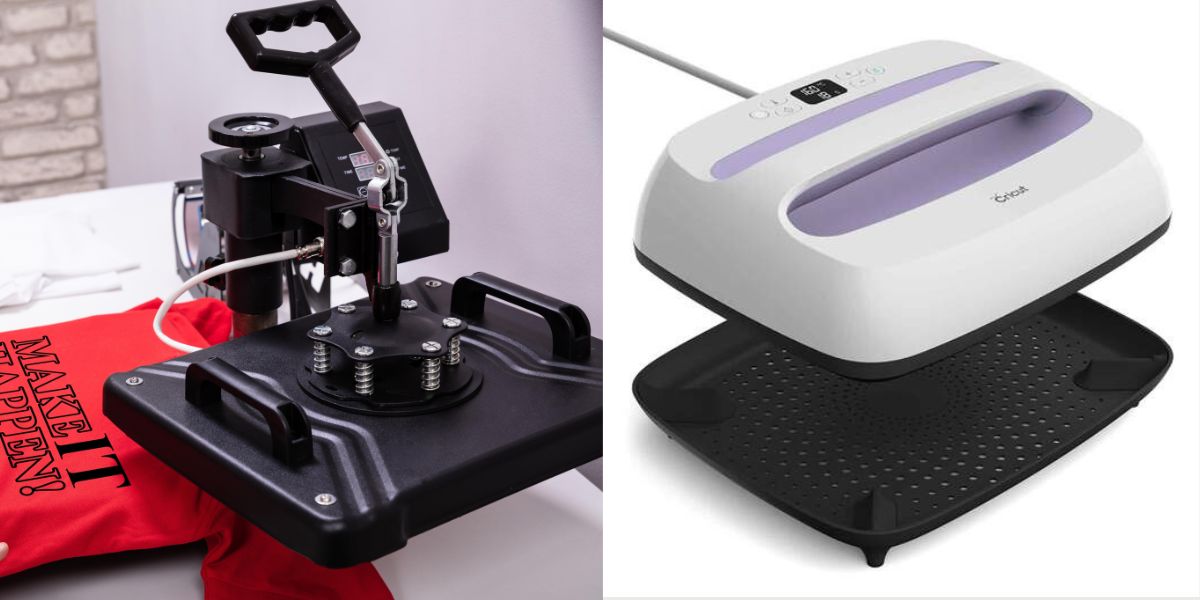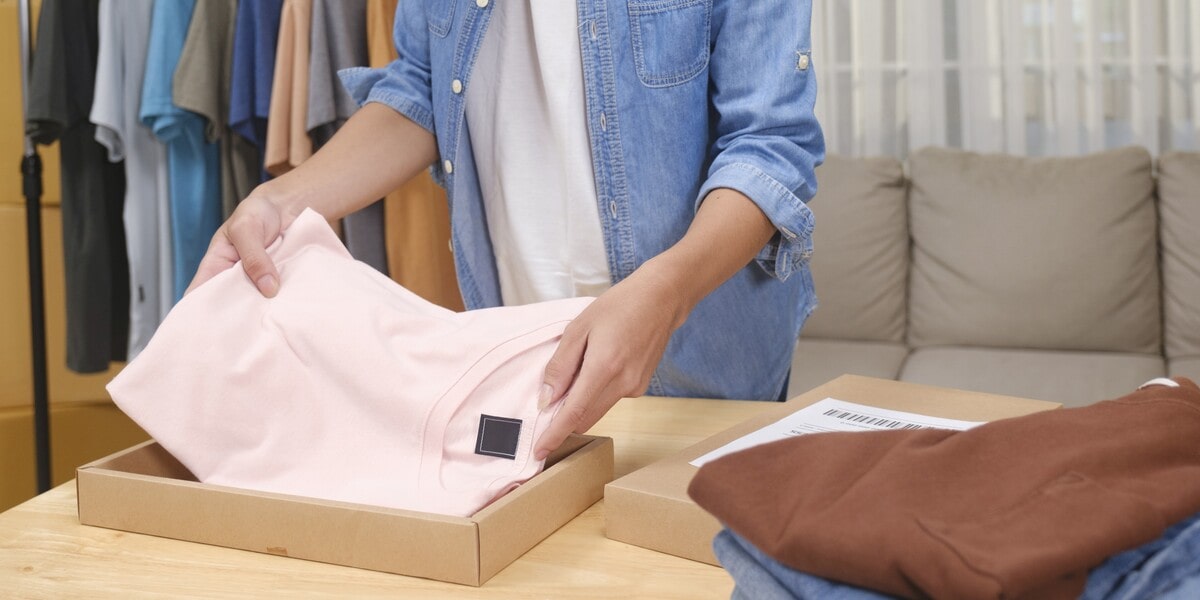
Blog
Screen Printing Machine 101: How It Works & What It Creates

Screen printing machine is now more and more popular among the printing industry thanks to its versatility and effectiveness. It plays an important role in the creation of countless everyday items. This method is known for its precision and reliability, making it a popular choice for professionals.
In this guide, we’ll explore what a screen printing machine is and a step-by-step process that this machine creates designs. Additionally, we’ll highlight the diverse products that can be created using this method. Let’s explore!
1. What is Screen Printing?
Screen printing, also known as silk screening or serigraphy, is a printing technique that uses a mesh screen to transfer ink onto a substrate. This method is widely used for creating vibrant and durable prints on a variety of materials, including fabric, paper, glass, and plastic.
Screen printing is a process that involves using a mesh screen to create designs. The mesh screen acts as a stencil, allowing ink to pass through only in specific areas to create the desired design.
The precision and versatility of this technique make it suitable for detailed and complex designs, which can be reproduced with high accuracy and consistency.
2. How a Screen Printing Machine Works
Screen printing transfers intricate designs onto various surfaces. So, if you are interested in it, let’s explore how these machines work by finding their basic components and how to start screen printing.
Basic components
A screen printing kit has the following key components:
Screen
The screen printing screens are a mesh fabric. It is typically made of polyester and is stretched tightly over a frame.
Frame
This is the structure holding the screen in place. It must be sturdy and securely fixed to ensure precise printing.
Base/Platen
When a substrate is printed, it is placed on a flat surface called a base/platen. It is crucial for keeping the substrate stable and aligned.
Squeegee
A rubber blade attached to a handle, this tool is used to push ink through the mesh screen onto the substrate. It ensures even distribution and pressure during the printing process.
Ink
In the screen printing art, we will use special inks which are chosen based on the substrate material. They can be:
- Plastisol
- Water-based
- Discharge inks
Substrate
A substrate means the material onto which the design is printed, such as:
- Fabric
- Paper
- Glass
- Metal
- Plastic
Depending on the substrate you choose, the type of ink you use and the type of screen you use will vary.
The Process
With the above component, a screen printing machine can create a beautiful product with the following steps:
Creating the stencil (screen)
The first step in the screen printing techniques is creating the stencil or screen. This is usually done by applying a light-sensitive emulsion to a mesh screen. Then, exposing it to a source of light with the desired design or image on a transparent film.
The areas exposed to light harden, while the unexposed areas remain soft and can be washed away, creating the stencil.
Setup
Once the stencil is ready, it is time to mount it onto a screen printing machine. The substrate onto which the design will be printed is also prepared and placed securely on the printing machine.
Printing
At this stage, ink is applied to the top of the screen. Next, you need a squeegee to spread the ink evenly across the surface of the screen.
The squeegee is then pulled across the screen. This forces the ink through stencils and onto substrates below.
Curing
After the design has been printed onto the substrate, the ink needs to be dried or cured to ensure that it is durable and long-lasting. This can be done using various methods, such as heat curing or air drying, depending on the type of ink being used.
For example, if you use water-based or discharge inks, the air drying method will be the best option.
3. Products Created with Screen Printing Machines
Materials they can print on
Screen printing machines are versatile tools that can create prints on various materials like:
- Textiles
- Paper and cardstock
- Plastic
- Metal
- Glass
- Wood
- Ceramic
- Leather
- …
Products created with screen printing
Here are some popular products that are commonly created using screen printing machines:
Clothing items
- T-shirts
- Hoodies
- Sweaters
- Caps
- Hats
- Tote bags
These items are some of the most popular items that are printed using screen printing. These products often feature vibrant designs and logos, making them popular for personal use or as promotional merchandise.
Home decor items
Home decor items such as:
- Printed pillows
- Curtains
- Cushions
- Trays
- Cups
- …
They can be customized with a screen printing machine to add a personal touch to living spaces.
Banners, posters & signs
Screen printing is commonly used to create banners, posters, and outdoor signs for both personal and business uses. These products are durable and weather-resistant, making them suitable for indoor and outdoor display.
Accessories
You can also using screen printing machine with accessories such as:
- Mouse pads
- Phone cases
- Other personalized items (keychains, coasters, ..)
Packaging items
With packaging items, screen printing machine can be used for:
- Printed boxes
- Labels
- Packaging materials (made from plastic, paper,…)
These customized packaging items help businesses enhance their branding and create a memorable unboxing experience for customers.
Custom stickers
Screen printing is one of the printing methods used for producing custom stickers. It can create vibrant, durable prints on:
- Paper stickers, which are temporarily used for event promotions, product labeling, and decorative purposes.
- Vinyl stickers: known for their durability and weather resistance, making them perfect for outdoor use (such as car decals, window stickers, bumper stickers, and promotional materials)
- Polyester stickers: Highly durable and resistant to chemicals, used for industrial labeling and equipment tags.
- …
While custom screen printing is a versatile method for creating custom stickers, our company currently utilizes digital printing technology to produce high-quality custom stickers. With digital printing, we can create custom stickers with sharp graphics, vivid colors, and intricate designs.
If you are interested in learning more about digital printing, read our article on digital printing. Discover how this advanced printing technology can help you create eye-catching printed products and custom stickers that make a lasting impression.
4. When should we use a Screen Printing Machine
When to use screen printing
Need durability
When you need prints that withstand washing and wear, choosing this printing method is perfect. Screen printing equipment creates highly durable prints, making it ideal for items that need to withstand frequent washing and heavy wear.
This is why it’s commonly used for apparel like screen printing t-shirts, hoodies, and other clothing items.
Require bright colors
Using screen printing machines, you are able to produce vibrant, true colors on both light and dark materials. This makes it perfect for designs that need to pop with bright and bold colors.
Material compatibility
As mentioned above, this method works well on many materials including fabric, paper, plastic, and metal. So, you can print on textiles, posters, signage, or promotional items with screen printing technique.
Need large print runs
Screen printing has high efficiency in producing multiple copies of the same design. Hence, if you have a high-volume printing project, screen printing can help you achieve consistent results across a large quantity of items.
When screen printing isn’t a good idea
On a budget
For large print runs, screen printing machines can be a cost-effective option. However, the initial investment in equipment and setup can be quite large. Additionally, maintenance costs for screens and inks should be factored into the budget.
Small workspace
Screen printing machines require space for the equipment and screens, which can be a consideration if you have limited workspace.
The setup involving screens and frames may take up additional room, so ensure you have adequate space for the equipment.
Last words
After finding the working process of the screen printing machine, you can see it will be an indispensable tool to create various designs. Their ability to produce high-quality, durable designs will ensure making items with many designs.
Also, a screen printing machine is a perfect tool that can create different products, from clothing, decorative items to accessories.
To discover more about other printing techniques and different printed products, don’t hesitate to explore other articles on our website.











